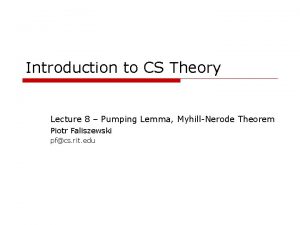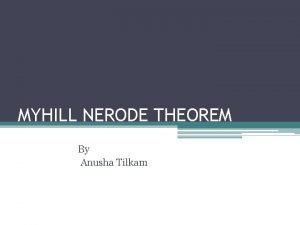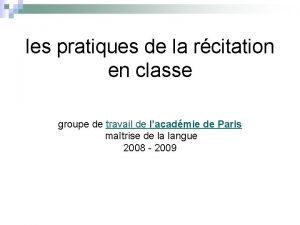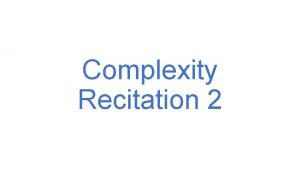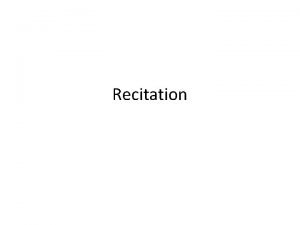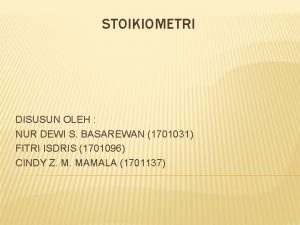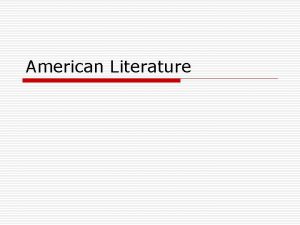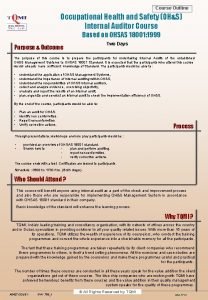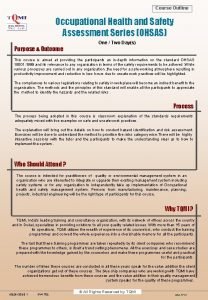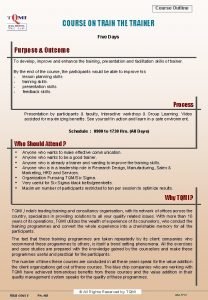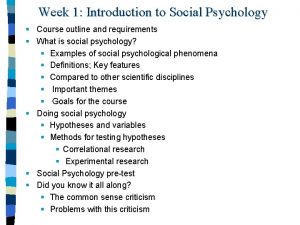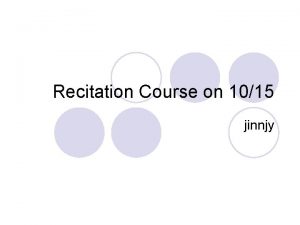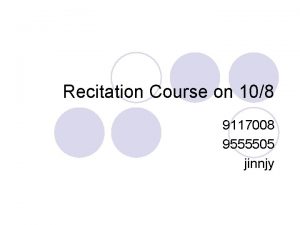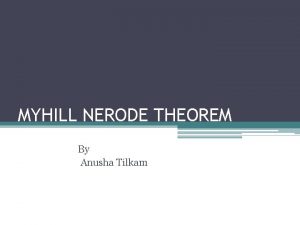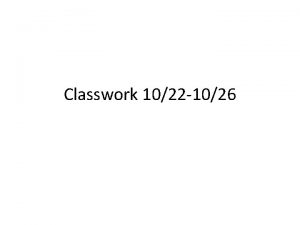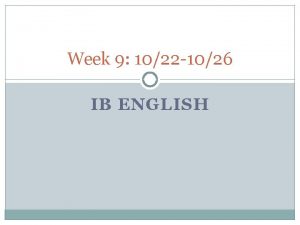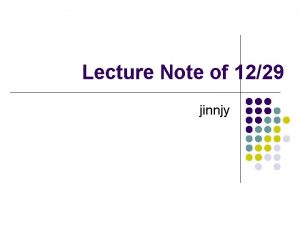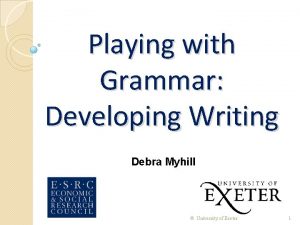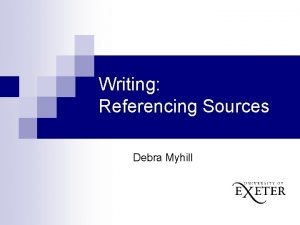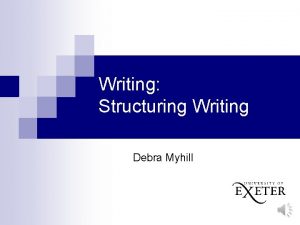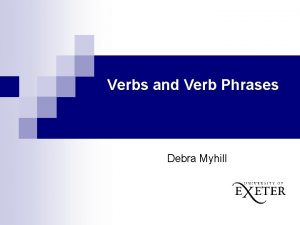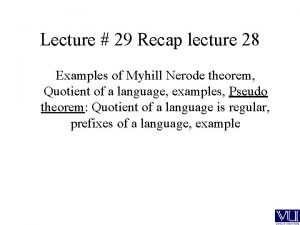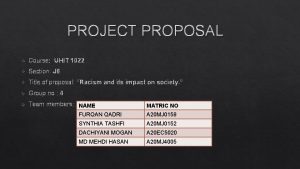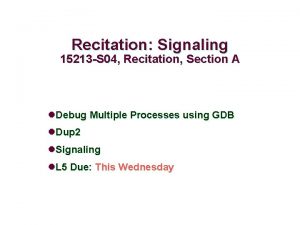Recitation Course on 1022 jinnjy Outline l Myhill






















- Slides: 22

Recitation Course on 10/22 jinnjy

Outline l Myhill Nerode Thm and application l Minimization of DFA and application l Context-Free Grammar

Myhill-Nerode Theorem

Myhill-Nerode Theorem

Application of MN Thm l Myhill Nerode Thm and application l Minimization of DFA and application l Context-Free Grammar

Application of MN Thm l Eg: Let L={0 n 1 n|n≥ 0}. ¡ ¡ The intuitive reason L is not regular : we must remember how many 0’s we have seen S={0 n|n≥ 0} : infinite set 0 i , 0 j ∈S, i≠j 0 i 1 i∈L but 0 j 1 i∉ L. ⇒ 1 i distinguishes 0 i and 0 j ⇒ The relation IL has infinitely many distinct equivalence classes and that L is not regular.

Application of MN Thm l Eg: S={0 n|n≥ 0} : infinite set, and L={ww|w∈{0, 1}*} is a language. z=1 n 0 n 1 n is a string. ⇒ 0 nz ∈ L , 0 mz∉ L ⇒ z distinguishes 0 n and 0 m

DFA Minimization Key: 把equivalent state合併 l Two states p, q are indistinguishable if l

DFA Minimization

DFA Minimization l Usage of table-filling algorithm: ¡ ¡ Decide whether two regular languages are equal Obtain the unique minimum state DFA from any given DFA


L(A)=L(B) ? ? q. A q. B A q. A A B C q. B B




Example of DFA minimization l e. g. L(A)={w| w has at least 2 a’s} a, b b 1 a b 2 a 4 b a 3

Example of DFA minimization l Basis: (1, 3), (2, 3), (3, 4) are distinguishable pairs. a, b b 1 a b 2 a 4 b a 3

Example of DFA minimization l Induction: d(1, a)=2, d(2, a)=3, d(4, a)=2. (1, 2) and (2, 4) are distinguishable pairs. a, b b 1 a b 2 a 4 b a 3

Example of DFA minimization l (1, 4) is indistinguishable. We have the equivalent DFA. b 1, 4 a a, b b 2 a 3

Summary of Chapter 1 DFA, NFA, regular expression l Pumping Lemma and Myhill-Nerode Thm l Closure Properties of regular languages l Decision Properties of regular languages l

重點提示 l l l DFA, NFA, regular expression的關係轉換 Pumping Lemma和Myhill Nerode Thm的使用 利用closure properties 及pumping lemma證明某 些language不是regular Closure properties 及Decision Properties Table-filling Algorithm的用途

重點提示 l 證明一個language ¡ l 是regular的方法 找出它的DFA, NFA, regular expression 證明一個language 不是regular的方法 Pumping lemma ¡ Myhill-Nerode Thm ¡ l 在證明一個language是regular時千萬不要提到 pumping lemma, pumping lemma 一個language是regular 不能拿來證
 In myhill-nerode theorem our goal is to find
In myhill-nerode theorem our goal is to find State myhill nerode theorem
State myhill nerode theorem Stonehill myhill
Stonehill myhill Expressive poems for recitation
Expressive poems for recitation Récitation les hiboux
Récitation les hiboux Quood posture 8
Quood posture 8 What is meant by etiquette of recitation of the holy quran
What is meant by etiquette of recitation of the holy quran Is the rote recitation of a memorized written message
Is the rote recitation of a memorized written message Recitation les machines
Recitation les machines Learning objectives of poem recitation
Learning objectives of poem recitation Criteria for judging performance
Criteria for judging performance Passive recitation
Passive recitation Performing voice communications army
Performing voice communications army Setiap 3,01 x 1022 atom besi mengandung jumlah mol sebanyak
Setiap 3,01 x 1022 atom besi mengandung jumlah mol sebanyak Voice communication army
Voice communication army Flavorful sentence
Flavorful sentence American literature course outline
American literature course outline Occupational health and safety course outline
Occupational health and safety course outline Occupational health and safety assessment series
Occupational health and safety assessment series Introduction to software engineering course outline
Introduction to software engineering course outline Train the trainer outline
Train the trainer outline Knowledge management course outline
Knowledge management course outline Social psychology class
Social psychology class
